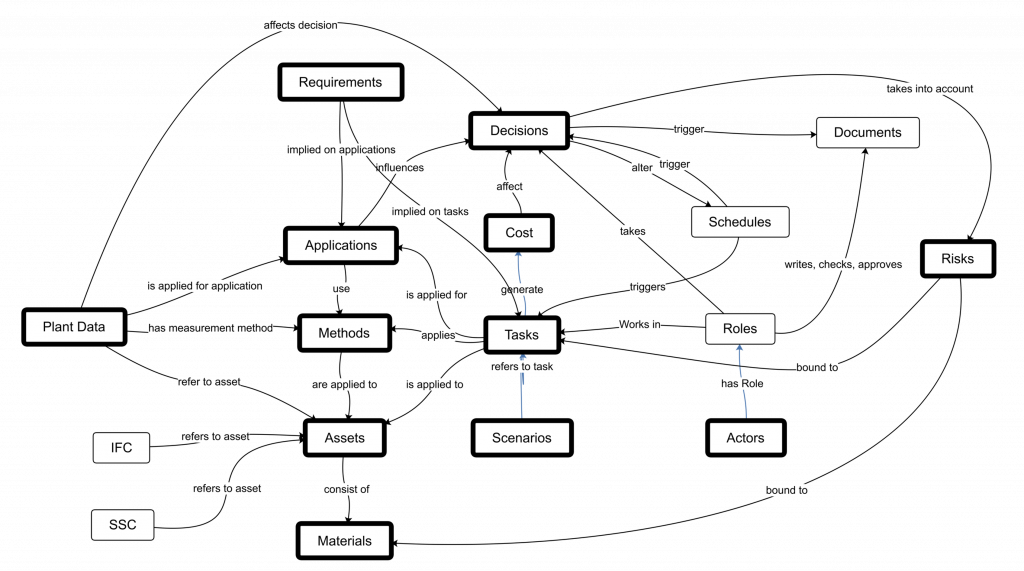

In a former issue of the newsletter we had already described the elaboration of the PLEIADES Decom Core Ontology. It was necessary to find to a common understanding of the decommissioning subjects and to align the implicit ontologies that were already used by the different software. This common understanding was necessary in two layers: between the subject matter experts themselves and between the subject matter experts and the data scientists. The highly interlinked nature of nuclear decommissioning would have made it difficult for the data scientists to understand the necessary transfer into an API to connect to the platform without the help of the ontology. Thus in a first step, the ontology was born out of an internal necessity of the project. Soon it became clear that it might serve for more than just that. It also helped partners involved in the project to revisit their knowledge management approaches.
There is a world outside the PLEIADES project, where the ontology has raised some interest. One of the partners, iUS, had some history in assisting the IAEA in some of their decommissioning knowledge management approach. iUS was involved in developing the ontologies for the IDN Wiki and the later Nuclear Wiki, both serving scientists and practitioners from IAEA member states as a knowledge management tool and basis for expert exchange.
IAEA, EC-JRC and OECD-NEA had formed a working group to investigate further optimization of their collaboration with regard to knowledge management in and for nuclear decommissioning. In a first step, these international organizations have concluded on a taxonomy for decommissioning. IAEA managed, using the INIS database, to vet their taxonomic approach against existing literature on the topic. The approach was recently published.
Both projects, PLEIADES and the international organizations taxonomy project, regularly exchanged about their positions and definitions, resulting in compatible, while not 100% identical approaches. This is still consistent as ontologies are designed for a certain purpose. While the ontology in the PLEIADES project needs to serve the conduction and management of a decommissioning project, the international organizations are using their approach to serve their knowledge management about decommissioning.
In a next step, the international organizations are planning to elaborate a decommissioning ontology to complement their taxonomical approach. The starting point might very well be the existing PLEIADES Decom Core Ontology.
Follow the project’s LinkedIn page and subscribe to our newsletter to keep up-to-date with the project’s progress!
